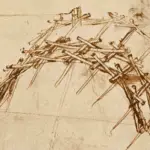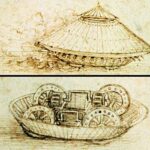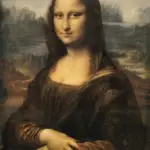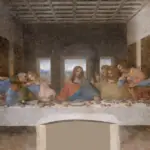Leonardo da Vinci Madonna Litta
Title: Madonna Litta
Year: c. 1490
Size: 42 x 33 cm
Medium: Tempera on canvas
Location: Hermitage Museum, Saint Petersburg, Russia
The Madonna Litta by Leonardo da Vinci has its figures positioned in a dark room with two arched arches, similar to his earlier Madonna of the Carnation, and a mountainous scene in aerial view can be seen beyond. Christ holds a goldfinch in his left hand as a symbol of his impending Passion.
The Virgin Mary is breastfeeding Baby Jesus. While breastfeeding, Mary appears respectable. She is looking at Jesus with her eyelashes dropped. She is dressed in a brilliant red gown with an orange-copper border and a light blue mantle. She covers her head with a transparent veil, which extends under her robe to her right and left hands.
Baby Jesus has curly hair and appears to be a healthy, fat infant. He resembles, albeit slightly younger, Baby Jesus in Leonardo da Vinci’s Virgin of the Rocks in the National Gallery. Jesus enthusiastically takes his mother’s breast while glancing around to ensure he is not missing anything in his surroundings. He clutches Mary’s breast in his right hand and a goldfinch in his left.
Interestingly, Mary and Jesus do not have a halo around their heads, which is unusual for Leonardo but not uncommon in his work. In the background, two symmetrical arched windows show a mountain panorama and a blue sky with clouds.
History of the Madonna Litta
The Madonna Litta painting could be one of the Madonna and Child paintings recorded in Leonardo’s studio prior to or during his first Milanese period 1481 to 1483. Leonardo stated on a drawing in the Uffizi that he had begun “two Virgin Maries” in late 1478, and an inventory of his workshop written in 1482 (part of the Codex Atlanticus) cites two paintings of “Our Lady” once more.
According to several readings, the second of them is either “nearly finished, in profile” or “finished, almost in profile.” The Virgin’s head in the Madonna Litta might be described in either way, hence it has been suggested that the painting was started during Leonardo’s first Florentine era and then abandoned until it was completed by a pupil in Milan.
However, scientific investigation of the picture has revealed that it was created by only one person. Scholars disagree on the piece’s attribution, with some claiming it is the work of a Leonardo disciple such as Marco d’Oggiono or Giovanni Antonio Boltraffio; however, the Hermitage Museum believes it is an autograph work by Leonardo. The picture was named after the House of Litta, a Milanese noble family that owned it for much of the nineteenth century.
Madonna Litta meaning
The Virgin Mary breastfeeding Baby Jesus exemplifies motherhood and maternal love. Mary’s blue mantle represents the Church, while her scarlet garment represents Christ’s passion. The goldfinch represents Jesus’ future crucifixion. The mountain backdrop in the background shows God’s majesty in creating the world.
The plain countryside, Mary’s fairly boring attire, the shadows in this painting, and the absence of details in her face (compare this to Leonardo’s drawing in the Louvre above) are the primary reasons why people wonder if this painting is totally made by Leonardo. Some believe that these elements are not of the standard we’d expect from Leonardo.
Experts agree, however, that the design of the picture, particularly the difficult posture of Mary and Baby Jesus, could be by Leonardo. So it is not unlikely that Leonardo began this painting but that it was completed by an assistant, possibly Giovanni Antonio Boltraffio.
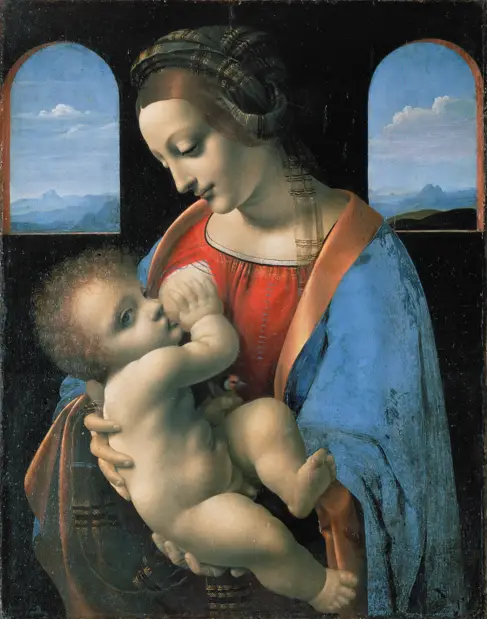
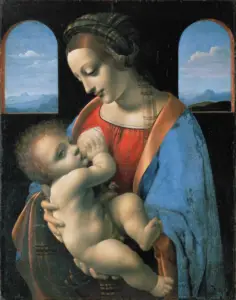
 I’m Leonardo Bianchi, the mind behind Leonardo da Vinci's Inventions. Thanks for visiting.
I’m Leonardo Bianchi, the mind behind Leonardo da Vinci's Inventions. Thanks for visiting. 